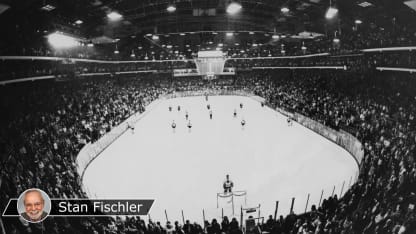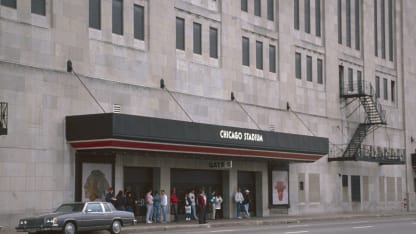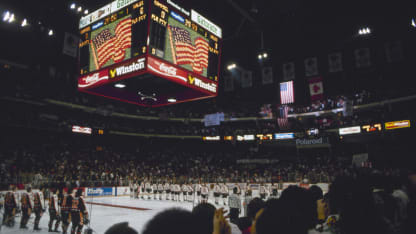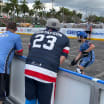Once granted entrance by the contentious canine, I took a gander at the Stadium's immense innards. Designed along the lines of Detroit's Olympia, the Stadium's seating arrangement included a pair of balconies that dwarfed those found in Madison Square Garden and Boston Garden. Another fascinating feature was that the dressing rooms were located below ice level, which meant that the players had to climb up a set of stairs to reach the rink.
High above the arena, the Stadium housed a mammoth Barton organ that contained 3,663 pipes, 800 stops and six keyboards, earning its recognition as the world's largest theater organ console. Organist Al Melgard became a celebrity in his own right, although he once was reprimanded by NHL President Clarence Campbell for humorously playing "Three Blind Mice" when the referee and two linesmen skated out at the start of games.
After checking out the Stadium's assorted fixtures, I couldn't help but notice the scoreboard, which featured actual clocks instead of the conventional digital numbers. They occasionally confused visiting broadcasters, including Bill Mazer, who in those days handled the CBS Network telecasts. During one Sunday afternoon telecast, Mazer ridiculed the Stadium's "confusing" clocks. A team official heard the critique and decided to punish Mazer.
At game's end, Mazer walked on to the ice to interview the afternoon's star, Chicago's Stan Mikita. Unknown to Mazer, the Black Hawks public relations department refused to allow Mikita on the ice. When Mazer got wind of the team's reprisal, he did what few, if any, hockey announcers ever did.
"I pretended to be Mikita," Mazer said. "I'd ask the question and then I'd move to where he would have been standing and I would answer it as if I was Mikita. It was a once in a lifetime interview."




















